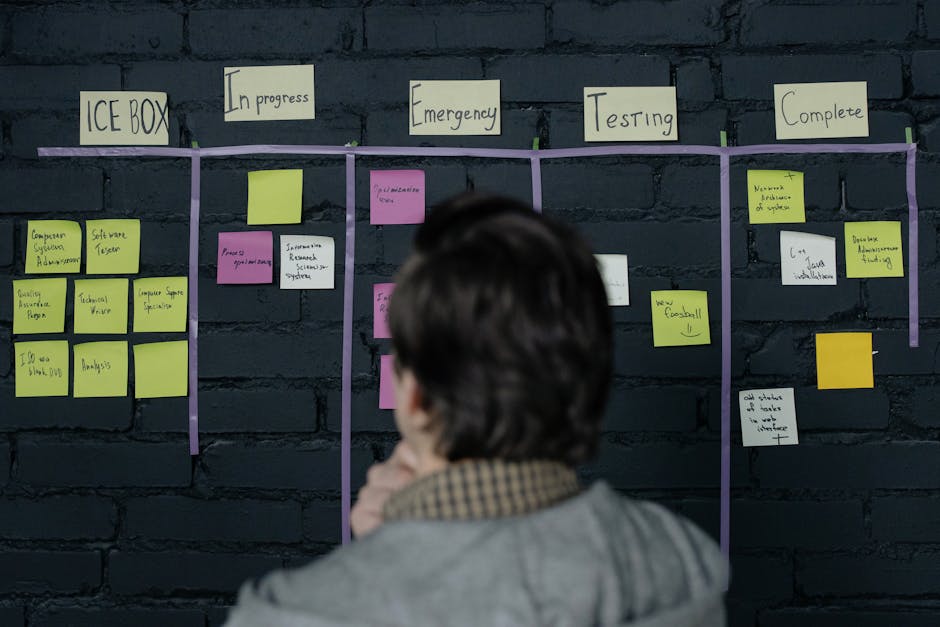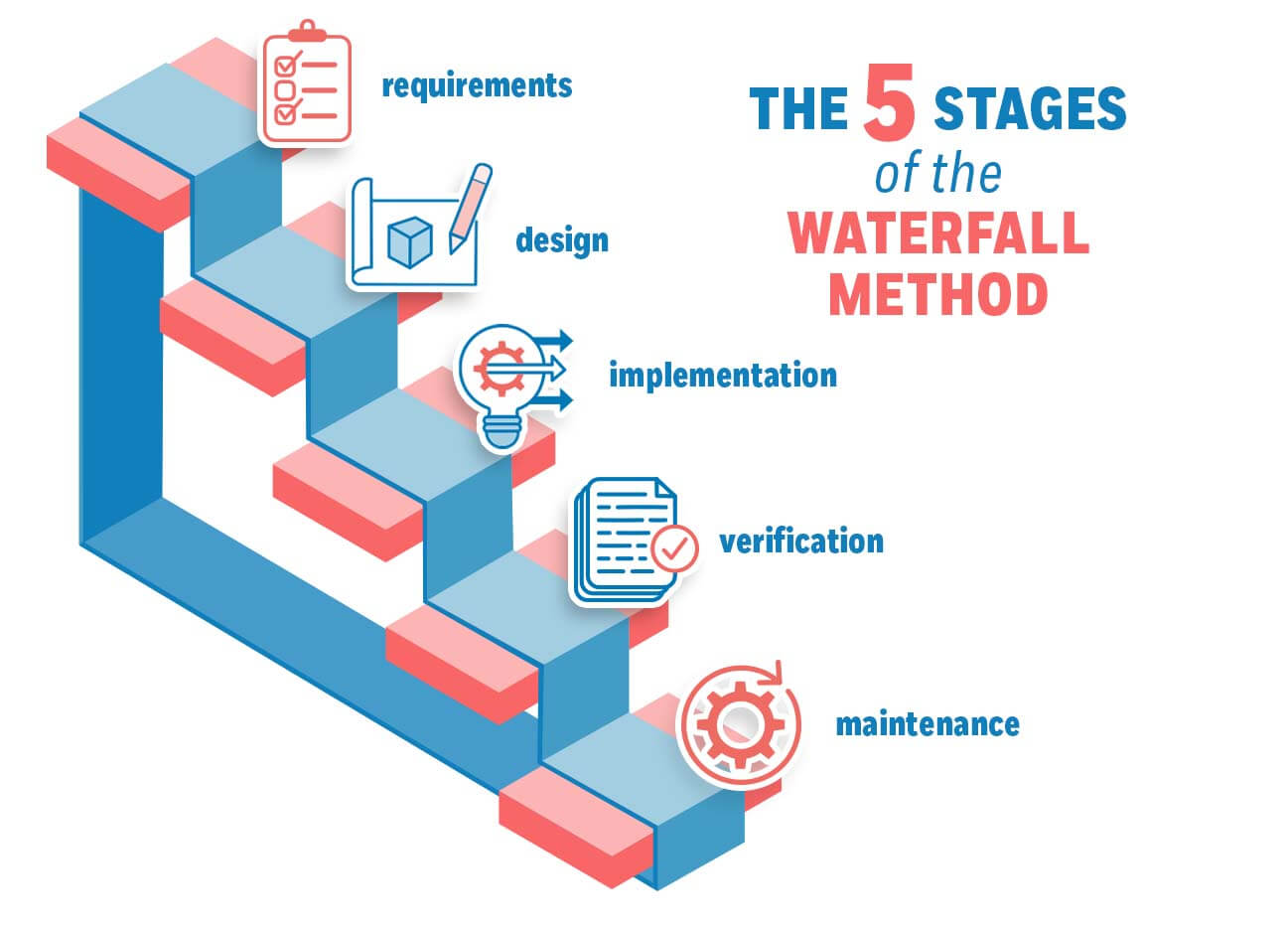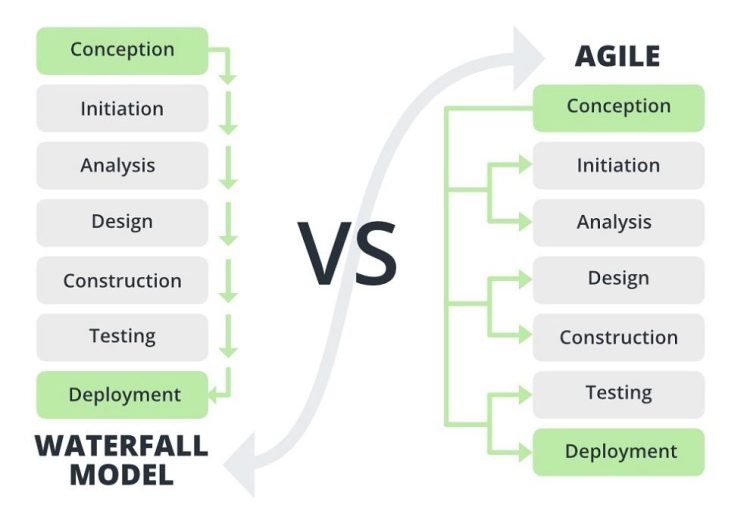Choosing a project management approach can be a bit like picking a movie on Netflix – you scroll through endless options, get distracted by something shiny, and end up watching cat videos instead. But fear not, dear reader, for we are here to help you navigate the wild world of project management methodologies. So grab your popcorn and settle in as we compare Agile and Waterfall, two popular but very different approaches, to help you select the ideal method for your next project. Let’s see if we can avoid any plot twists, shall we
Key Differences Between Agile and Waterfall Project Management
So you’ve found yourself in the never-ending debate of Agile vs Waterfall project management. Let’s break it down in a way that even your grandma can understand.
First up, we have Waterfall, the OG of project management. It’s like a well-structured play – everything happens in a linear fashion. Think of it as a meticulously planned wedding where you have a checklist for every single detail – from the flowers to the seating chart. However, just like your annoying cousin who insists on bringing his pet lizard to the ceremony, Waterfall doesn’t handle unexpected changes too well.
On the other hand, Agile is like a music festival - chaotic, exciting, and full of surprises. It’s all about collaboration, adaptability, and being open to change. With Agile, you’re not stuck following a rigid plan. You can pivot, adjust, and even throw in some last-minute fireworks (figuratively speaking, of course).
So, if you’re the type who likes to stick to the script and color inside the lines, Waterfall might be your jam. But if you’re up for some wild rides on the project management rollercoaster, buckle up and give Agile a try. Just don’t forget your helmet – things can get pretty crazy in the world of Agile.
Understanding the Agile Methodology
So, you want to understand the Agile Methodology, huh? Well, get ready for a wild ride of fast-paced project management and constant collaboration. Agile is like the cool kid in school who never follows the rules but somehow always gets the A+. It’s all about adaptability, flexibility, and teamwork – kind of like a well-oiled machine on a rollercoaster ride.
Forget about those long, boring waterfall projects where you have to wait months (or even years) to see any progress. With Agile, you get to see results faster than you can say “sprint planning meeting”. You’ll be breaking down tasks into bite-sized chunks, prioritizing work based on value, and delivering small increments of awesomeness on a regular basis.
Oh, and did I mention the daily stand-up meetings? Yeah, those are a thing in the Agile world. It’s like a mini pep rally where everyone gets together to talk about what they did yesterday, what they’re doing today, and if they have any roadblocks standing in their way. It’s all about keeping the communication flowing and the momentum going – kind of like a team of superhero cheerleaders saving the day, one sprint at a time.

Exploring the Waterfall Methodology
Are you ready to take a dive into the mystical world of the Waterfall Methodology? You may think it involves physically chasing waterfalls, but fear not, it’s actually a software development approach! Let’s uncover the secrets of this enchanting process.
First things first, the Waterfall Methodology is all about flowing in a linear, sequential fashion. Picture a majestic waterfall cascading down step by step, just like how your project tasks should progress. No going back up the waterfall here, once you’ve moved on to the next stage, you’re in for the long swim!
Now, let’s talk about the stages of the Waterfall Methodology. Like a journey through a mystical forest, you’ll encounter requirements gathering, design, implementation, testing, and maintenance along the way. Each stage is like a checkpoint on your quest, making sure you’re on track and haven’t taken a wrong turn into the murky waters of chaos.
So, grab your explorer hat and get ready to embark on a wild ride through the Waterfall Methodology. Just remember, like any adventure, there may be unexpected twists and turns along the way. But fear not, with a splash of creativity and a sprinkle of determination, you’ll emerge from the waterfall stronger and wiser than ever before!

Pros and Cons of Agile Project Management
Are you considering implementing Agile Project Management but not sure if it’s the right fit for your team? Let’s break down the good, the bad, and the hilarious of this popular project management methodology.
Pros:
- Increased collaboration and communication among team members
- Flexibility to adapt to changes and feedback quickly
- Improved product quality due to regular testing and feedback loops
- Increased customer satisfaction with the ability to deliver value early and often
Cons:
- Uncertainty and constant changes can be overwhelming for some team members
- Requires a high level of discipline from all team members to stick to timelines and deliverables
- Can be challenging to manage scope creep and prioritize tasks effectively
- Not suitable for projects with strict deadlines and fixed requirements

Pros and Cons of Waterfall Project Management
Waterfall project management, like any other methodology, has its fair share of pros and cons. Let’s dive into the good, the bad, and the downright ugly of this traditional approach.
First off, let’s talk about the pros. Waterfall project management provides a clear structure and timeline for a project, making it easy to track progress. It’s like following a recipe – simple and straightforward. Additionally, stakeholders can easily understand the project’s progress, as each phase is clearly defined. Plus, who doesn’t love a good waterfall diagram? It’s like a work of art in project form.
Now, onto the cons. One of the biggest drawbacks of the waterfall approach is its lack of flexibility. Once you’re in the waterfall, there’s no turning back. Changes are not welcome here, my friend. This rigidity can lead to project delays and cost overruns – definitely not ideal. And let’s not forget the potential for scope creep. If you’re not careful, your project could end up looking like a waterfall that just won’t stop flowing.
Overall, while waterfall project management has its advantages, it’s important to weigh them against the potential pitfalls. So, if you find yourself standing at the edge of the waterfall, ready to take the plunge, just make sure you’ve got a life jacket handy. You never know when things might get rocky.
Determining Which Approach is Best for Your Project
So, you’re faced with the task of . This decision can feel as daunting as choosing what to watch on Netflix when there are just too many options. But fear not, we’re here to help you navigate through the sea of choices with a touch of humor and a sprinkle of wisdom.
First things first, consider the scope of your project. Are we talking about a small, one-person job or a massive, team effort that requires coordination like herding cats? It’s important to assess the size and complexity of your project to determine the best approach.
Next, think about your timeline. Are you facing a tight deadline that’s looming over you like a dark cloud? Or do you have the luxury of time to meander your way through the project like a leisurely stroll in the park? Your timeline will dictate whether you need a fast and furious approach or a more methodical and deliberate one.
Lastly, consider your own strengths and weaknesses. Are you a lone wolf who thrives in solitude, or do you excel in a team environment where collaboration is key? Understanding your own preferences and capabilities will help you choose an approach that plays to your strengths and sets you up for success.
Case Studies: Successful Implementations of Agile and Waterfall in Various Industries
Ever wondered how Agile and Waterfall methodologies can be successfully implemented in various industries? Well, look no further! We’ve gathered some epic case studies that showcase just how these methodologies can work wonders.
Picture this: a tech company decided to adopt Agile for their software development projects. The result? Faster delivery, increased customer satisfaction, and a team that’s always ready to tackle new challenges. Who knew that a little Agile magic could make such a big impact?
But wait, that’s not all! In the world of construction, a company decided to stick with the good ol’ Waterfall method. And you know what? They nailed it! With a clear roadmap in place, they were able to build skyscrapers faster than you could say “Waterfall is old school”. Who says you need to ditch the classics?
- Agile and Waterfall are like peanut butter and jelly – they may be different, but they sure do make a tasty combo!
- Who says work can’t be fun? With Agile and Waterfall, you’ll be sprinting towards success in no time!
So, whether you’re in tech, construction, or any other industry, don’t be afraid to mix things up with Agile and Waterfall. Who knows? You might just be the next success story!
FAQs
What are the main differences between Agile and Waterfall project management approaches?
Agile is like a roller coaster ride, with quick sprints and flexibility, while Waterfall is more like a leisurely boat cruise, following a linear process from start to finish.
How do you determine which approach is the best fit for your project?
It’s like choosing between a sports car and a minivan – consider the size, speed, and agility of your project to see which one will get you to your destination quicker and with fewer bumps in the road.
Can Agile and Waterfall be used together on the same project?
Imagine combining a recipe for a cake with a recipe for a casserole – it might be possible, but it could end up a confusing mess. It’s best to stick with one approach for simplicity’s sake.
What are the advantages of Agile over Waterfall, and vice versa?
Agile is like a trendy food truck – it can adapt to changing tastes and preferences quickly. Waterfall is like a classic sit-down restaurant – it’s reliable and follows a set menu.
How do you transition from Waterfall to Agile, or vice versa, during a project?
It’s like switching from driving a manual transmission car to an automatic – there will be a learning curve, but with practice and patience, you’ll be cruising along smoothly in no time.
—
Deciding Between Agile and Waterfall: A Tough Choice
Well, there you have it – the age-old battle between Agile and Waterfall project management approaches. Whether you’re all about embracing change and flexibility or you prefer sticking to a strict plan, the decision ultimately comes down to what works best for your team and project.
Just remember, no matter which approach you choose, project management is no easy feat. So, grab a cup of coffee, put on your thinking cap, and get ready to tackle whatever challenges come your way. And hey, if all else fails, there’s always the trusty coin flip method!
Now go forth and conquer, project managers. The world is your oyster. Or should I say, your Agile user story




